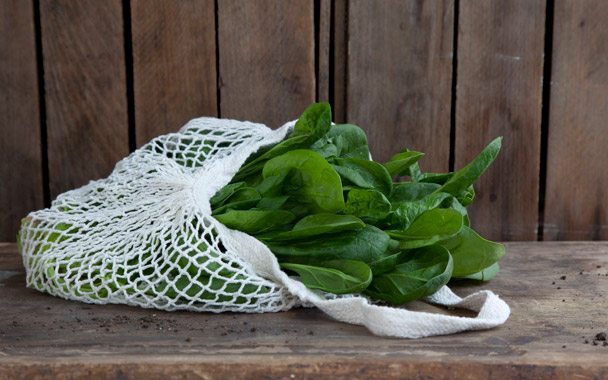The experiment began innocently enough: the first Saturday I brought greens home from the market this spring, Tara looked at them and said “Man, did I miss this stuff over the winter. Do you think it would be possible to eat enough leafy greens to get tired of them?” We decided then and there to give it a try. I am happy to report that, three or four weeks into spring, the answer so far is, “No, not even when eating big plates of them every day.” But one reason we haven’t gotten sick of them yet is that we’ve been preparing them in as many ways as we can think of.
One of the biggest challenges has been figuring out what to do with spinach. In our house we tend to go in one of two directions. There are the endless variations of spinach salad, which can be meals in themselves: with goat cheese, baked or not, as fits the mood; with a poached egg and crunchy croutons, for indulgence; with crispy lardons of bacon and a warm bacon-fat vinaigrette for savory richness. When roasting a chicken, though, or cooking a piece of fish, nothing beats sautéing some garlic in a hot pan and then adding vast quantities of the green, which wilt quickly into a pile of concentrated goodness. Both these techniques are beautiful. But about this time last year, inspired by memories of a trip to Japan, I started making simple room-temperature salads of blanched spinach, and they’re a really nice change of pace.
The inspiration comes from two closely related salads: oshitashi and goma-ae. In both, large quantities of meticulously-cleaned spinach are wilted in boiling salted water, refreshed in cold water, drained, wrung out hard, and chopped into pieces. The dressing for oshitashi is simple: a little soy sauce, a little mirin (sweet rice wine), maybe a little dashi if you have it handy. For Goma-ae the same ingredients are ground together with some toasted sesame seeds to make a thicker, slightly richer dressing.
This works best with the thick leaves of over-wintered spinach, which retain a little bit of texture even when they’re blanched. Mirin is a little sweet for me, and I don’t typically think far enough in advance to roast sesame seeds, so I dress my wilted spinach with a little soy, a little rice wine vinegar, and a splash of toasted sesame oil. True, it’s not the same thing as oshitashi or goma-ae, but it is a neat way of eating more spinach.




 Pinterest
Pinterest


